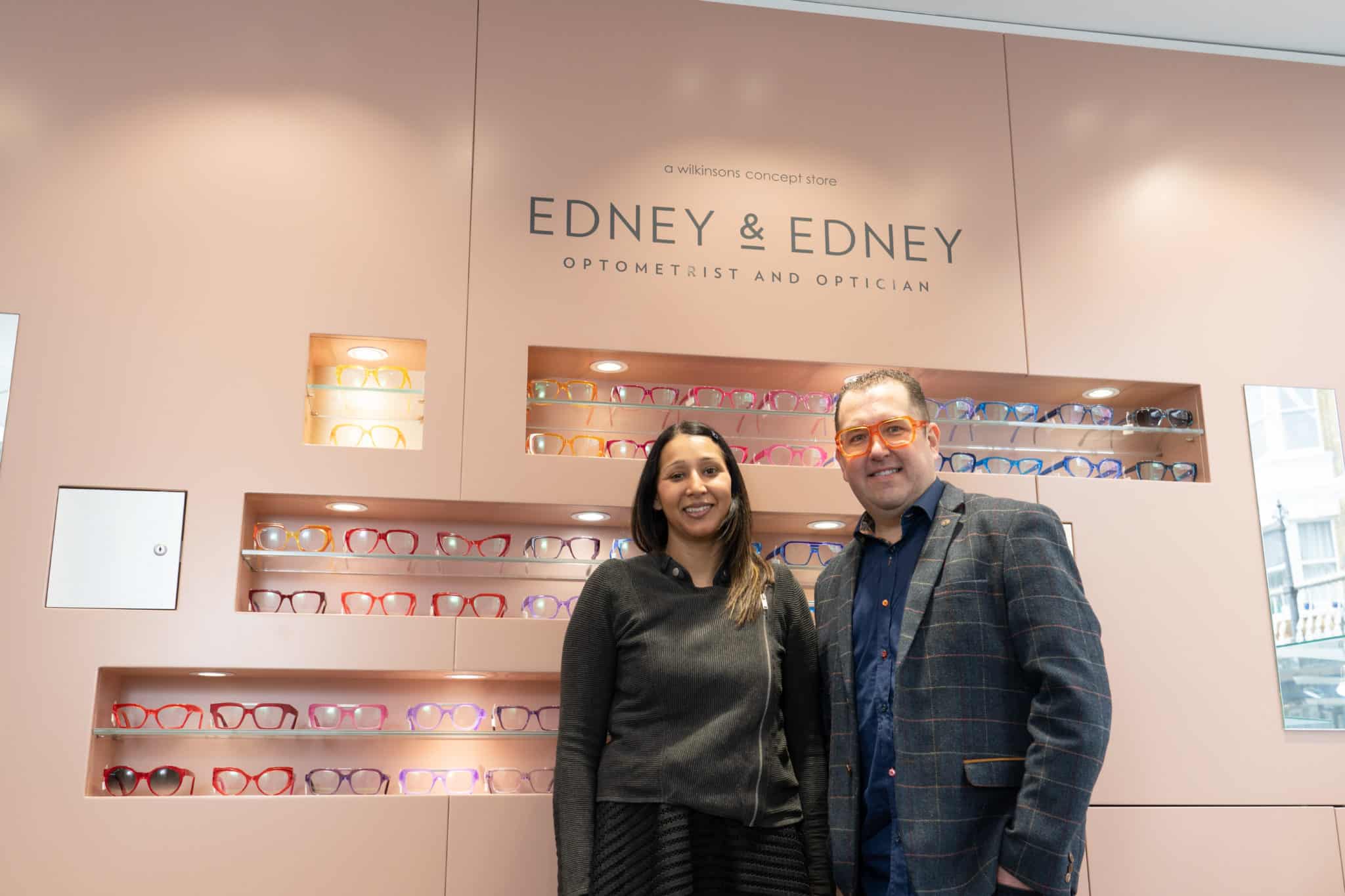This month optician Jame Edney – who runs designer eyewear boutique Edney & Edney with his optometrist wife Ayshah on Monson Road – looks at the variety of varifocals now available…
Since the launch of the very first varifocal, the Varilux in the late 1950s, varifocal lenses have been a hugely popular yet divisive technology.
In this month’s column, I want to discuss how they work, why they’re necessary and the different types available. Whether you’re an existing wearer, you’re considering trying them, or you’ve been recommended them for the first time, by having a better knowledge of the product, you can make a more informed choice at your next visit to the opticians.
Varifocals are designed for people who require different prescriptions for different tasks, most commonly for distance and near vision. Most of us will require different prescriptions for distance and near due to a phenomenon called presbyopia (Greek for old eyes!) Our eyes become presbyopic when our eyes’ built-in autofocus mechanism becomes less effective due to reduced flexibility of the lens behind the pupil. This typically starts in the mid to late 40s, and gets progressively more pronounced over the following decades.
Historically, the most popular solution to this problem was to have separate pairs of spectacles for specific tasks – for example driving spectacles, reading spectacles, computer spectacles and so on. This remedy is very effective for giving clear vision, but quickly becomes tedious when needing to quickly change what you are looking at. For example, when driving a car, you may need to look at your Sat Nav, your dash board and the road ahead in quick succession – changing spectacles would be impractical and unsafe.
“We use Nikon but as an independent optical practice we can also provide lenses from all major lens suppliers”
Varifocals rely on the principle that generally when we are looking at things in the distance, we are looking straight ahead. When we need to look at something closer, we usually look down onto it, such as a wristwatch, a book, a phone, or a task like cooking. Varifocals exploit this principle by having a progression of power across the lens, meaning that the top part of the lens has the distance prescription and the lower part has a gradual increase in prescription for closer tasks.
This idea is not a new one, in fact, varifocals work on the same principle on which Benjamin Franklin’s very first ‘Franklin Split Bifocal’ was based on in 1779, except there is no line across the lens and they weigh considerably less!
Older and simpler progressive designs admittedly have one drawback, which is still a reason why many are hesitant to try varifocals. These now superseded designs achieve a progression of power across the lens at a cost – the lower peripheral vision through the lens is distorted and blurry, giving the wearer the infamous ‘swimmy’ sensation. This shortcoming was seen as a reluctant compromise for the sake of convenience. However, since the early generation lenses, modern lens suppliers including Nikon have developed lenses which all but eliminate the design flaws by tailoring the optical power at every point based on the wearing position of the frame to minimise peripheral so-called off-axis oblique astigmatism.
The newer, more researched lenses are usually the best designs, but the older design will still be available at a cheaper price, hence the catalogue of lenses which may be discussed during a spectacle dispense. The statement ‘you get what you pay for’ has never been truer than in the case of varifocals.
The collective term ‘progressive lens’ does not just describe varifocals. Similar lens designs called occupational progressives and enhanced readers make use of progressive surfaces by having the full reading prescription in the lower part of the lens, and a reduced near prescription at the top.
“The top part of a varifocal lens has the distance prescription and the lower part has a gradual increase in prescription for closer tasks”
This results in a lens which performs fantastically in a close work environment due to its superior field of view over a varifocal, and flexibility in working distance over a pair of simple reading glasses. An occupational progressive lens coupled with a good varifocal will provides the wearer the convenient, uncompromising vision required for day to day life.
Very rarely, wearers who try varifocals for the first time may simply prefer separate pairs. If this is the case, most reputable lens companies offer a non-tolerance policy. This means, if you try varifocals but don’t get on with them, within a few months (the exact time varies between suppliers) you can return them for exchange or refund. This eliminates the risk of being stuck with a pair of spectacles you do not get on with – so there really is nothing to be lost from trying varifocals!
It is very easy to get distracted by our phenomenal collections of artisan spectacle frames, but an incredible frame should house an equally high performing lens, which is why we use Nikon. We are Nikon lens specialists for good reason, their superior optical quality has put Nikon at the forefront of lens design for decades. However, as an independent optical practice we can also provide lenses from all major lens suppliers, so if you have a preferred lens design, we can supply it!
I hope that you now feel more confident with discussing varifocals with your optician, and if you are one of many who have been reluctant to try them, I urge you to step into the brave new world of progressive lenses. If you are already wearing varifocals, your optician should be discussing the latest developments in lens technology with you to make sure your vision is the best it can be. As usual, if you would like to know more please pay Edney & Edney a visit in Monson Road, Tunbridge Wells.
GET IN CONTACT:








